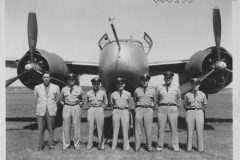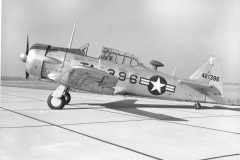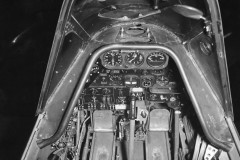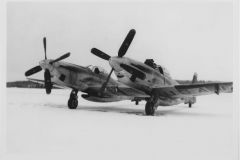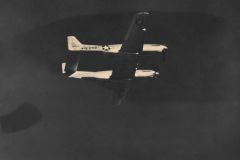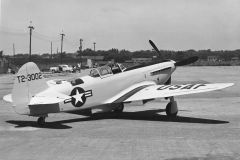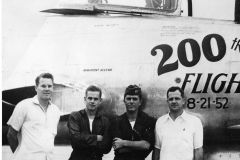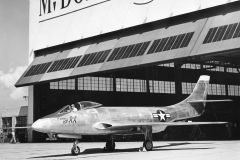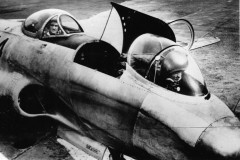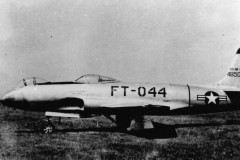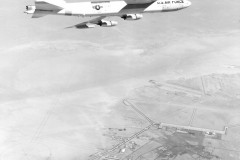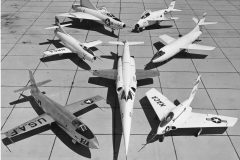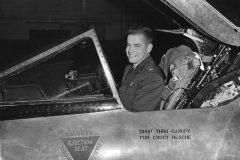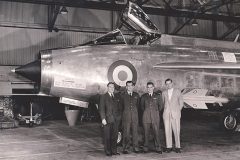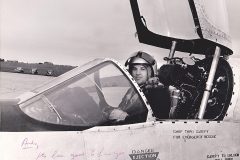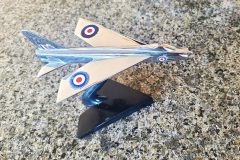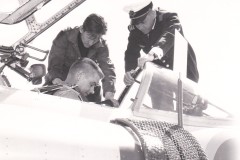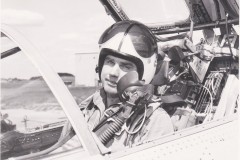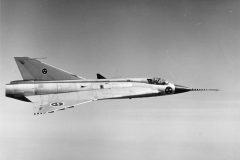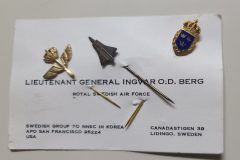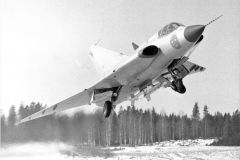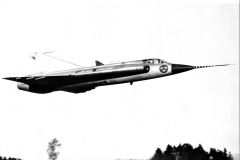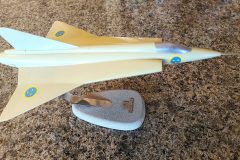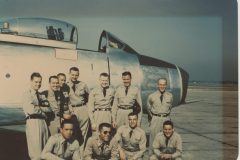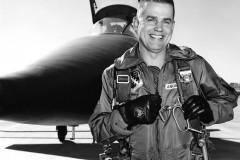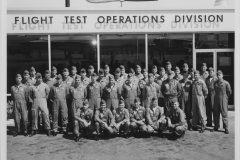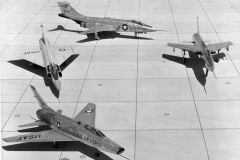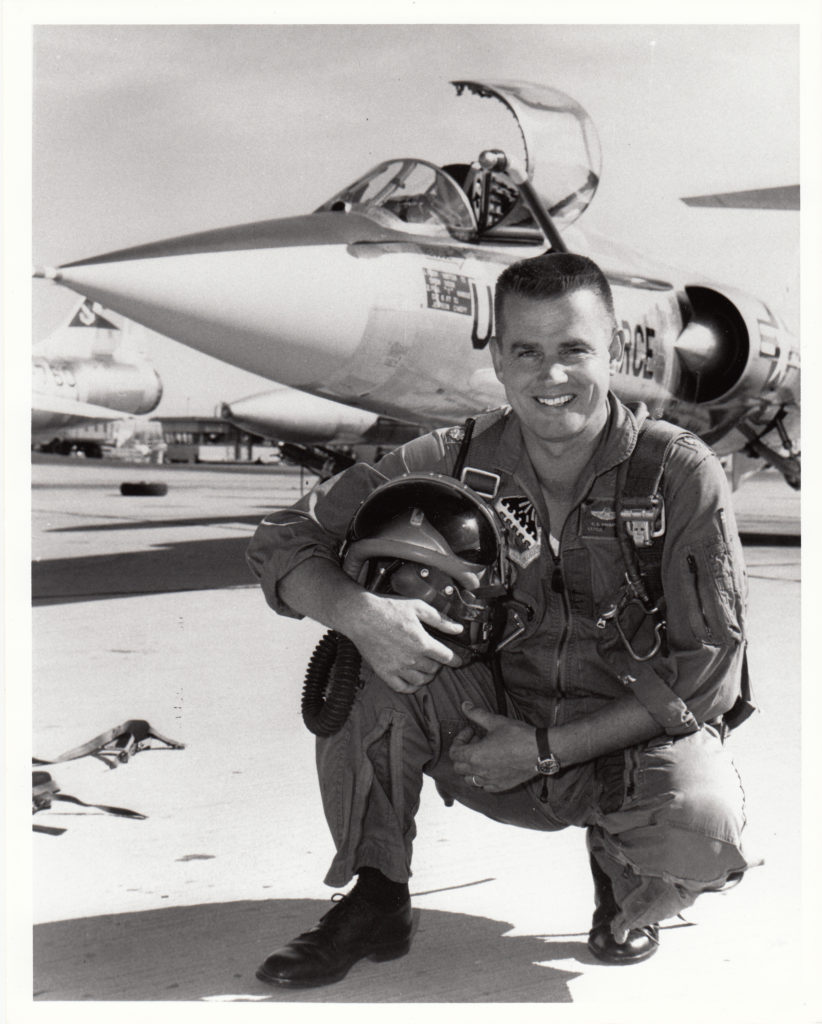
Test Pilot Bud at Edwards AFB with an F-104
COLD WAR FLIGHT TESTING
You might think fight testing is a glamorous job, but actually it is a lot of very hard work with little glamour or appreciation. Test pilots evaluate an aircraft to determine its good points, but also to find any bad characteristics. Project management does not like bad news, as it may cause schedule changes and more expenses to fix.
I thought that I was a pretty good instrument pilot, one who flies in the weather, until I went through the Performance Course of the Air Force Test Pilot School at Wright Field. When you are flying in weather, if you are a little off on your air speed or altitude, a little off is OK. But when you are collecting data for aircraft performance, it has to stabilized and accurate to .10 degree.
A good example of the plain drudgery of flight testing is one of the early projects assigned to me at the Fighter Section. The project was to determine the roll performance of an aircraft with slab sided ailerons. The aircraft used was a standard P-80 with no external fuel tanks. The test was to check the roll performance data from minimum airspeed to maximum at every 10,000 feet in altitude for various sizes of ailerons. First we obtained the roll performance on the basic production P-80 aircraft. We also had to find a way to sure the data correlated. In order to make sure the pilot was using exactly ¼, ½, ¾ and full aileron, we attached a small chain to the right side of the cockpit and then attached the chain to ring on the side of the control stick for each quarter. The flying was very tedious. Take off, fly to 10,000 feet, get set on a heading and stabilized on minimum airspeed and do a set of rolls. Then accelerate to maximum airspeed, stopping at 10MPH increments and execute another set of rolls. Now consider the workload of flying the aircraft with zero tolerance, lots of time with head in the cockpit, keeping yourself clear of traffic and not getting lost. That is drudgery. Whew, that was drudgery just trying explain!!
In 1948, I started off in a new career field, military flight testing. Through the help of a good friend, I got an interview with the Colonel Albert Boyd, Chief of Flight Test at Wright Field near Dayton, Ohio. He was a crusty old guy and I didn’t get any promises, but later on my orders came through. I wanted to be assigned to the Fighter Test Section, but I was a new guy and a Major, so I was initially assigned as Chief of the Accelerated Service Test Section. There we flew new type aircraft at a fast rate, to get data on how they held up under those conditions. As it turned out, my first project was one from the Fighter Test Section. The F-82E needed to be flown to Alaska for cold weather testing. So, I took off for Ladd Field, AK, around Thanksgiving and returned around Easter. It was an interesting time for me. We did get some low temperatures, as low as minus 65 degrees F, but we dressed for it and lived in warm quarters. When I returned, I was sent to what was called the Test Pilots School at Patterson Field, to attend the performance course. I thought I was a good instrument pilot, but in performance testing we are talking instrument flying with zero tolerances. We had regular class room academics and flying. During the course we determined the performance of the AT-6 trainer, as well as the P-51D fighter. After successfully completing the performance course, I was assigned to Fighter Test Section, where my first project was to get performance data on my cold weather friend, the F-82E with multiple external fuel tank configurations. A long and tedious job, but meanwhile getting checked out it all the current jet fighters, such as the P-80, F-84, F-86. As time progressed, I returned the Test Pilot School to attend the Stability and Control course. It was back to the schoolroom and flying the B-25 twin engine bomber to determine its stability and control characteristics (handling qualities). Two classmates would team up for the flying portion of the course. Upon successful completion of this course, I returned to the Wright Field Fighter Test Section, as a fully qualified experimental test pilot. Incidentally Wright Field and Patterson Field were separate bases, but physically close. Later, they became Wright-Patterson AFB, one base. Later all flight test operations moved to Patterson Field to take advantage of the longer runway and better approaches. We had a lot of interface with the Government Air Force contractor test organizations. Their test pilots were mostly ex- military pilots, usually someone you knew personally. So, I was in a position to learn what was going on in the industry, as well as, the military side.
Two major Flight Test Projects Bud was involved in as the primary test pilot while at Wright Field were:
WINGTIP COUPLING EXPERIMENT – Caught by the Wing-Tip
FICON – Fighter Conveyer Experiment
I spent several years at Wright-Patterson AFB Ohio, in the Flight Test Division, Fighter Test Section. There I did flight testing as an active test pilot, as well as being Chief of the Fighter Test Section during my final years there. I met some great pilots there, such as Richard L. Johnson, Stuart R Childs and Russell Schleeh. From there, I was assigned to the Pentagon, the Command and Staff College, Korea, and then to Edwards AFB, CA. There I spent the first year as the Vice Commander of the Parachute Test Group located at the Naval Air Station in El Centro, CA. After that I was assigned to the Flight Test Division at Edwards as Chief of the Flight Test Operations. The job was mainly as Supervisor for all the test pilots. We had a Fighter, Bomber, Cargo-Trainer & Miscellaneous, and Special Projects Sections. The Century Series Fighters were still being tested, the C-130 and the C-141 were just were being tested. We were also testing the B-47, B-52 and B-58 bombers. Another interesting project at Edwards was the X-15 program. It was a joint USAF-NASA project; our participation was to furnish X-15 pilots and B52 –X15 mother ship support. Air Force contractors also operated from Edwards AFB and the North American XB-70 flight tests was just starting. It was a wonderful job for me as I participated in pilot selection for special projects and was also able to fly many different aircraft. Depending on how you want to define ‘different,’ I have flown between 100 -150 different types of aircraft during my military/general aviation career.
NASA was starting up the space program and astronaut selecting was starting. Astronaut selection was accomplished by an ambitious medical process. We objected but were left out since the selections were being made for NASA not the Air Force. During my tour the Air Force proposed a space program requiring Astronauts, so we stepped in and were able to select our own Astronauts. We compromised by allowing our Astronauts to be medically tested after they were selected. The whole medical selection processes was based on the theory that they could medically measure motivation. I thought that was pure BS and motivation could only be measured by peers after years of observation. Of course, the Air Force Space program was cancelled when President Eisenhower declared that space was for peaceful purposes. Years later, the folks that did the NASA selection process wrote their final report and concluded that it was impossible to medically measure motivation.
I left Edwards AFB to attend the Army War College as an exchange student. One year later I returned and since I had been prompted to full Colonel, I was selected for the job of Deputy Director of Flight Test. The number two job in all of the flight testing process. I worked with so many great pilots while at Edwards and had some great trips while there. Several test pilots from the Flight Test Operations were actually selected as NASA Astronauts. Donald ‘Deke’ Slayton was selected in the original class. James McDivit and Michael Collins were in the second class. Collins was part of the three man team that put a man on the moon in 1969. Another great Test Operations veteran pilot was Pete Knight an X-15 pilot and later a California State Senator. Further, Joe Engle got into the NASA Astronaut program. First, he was a pilot in the X-15 project. In 1966 he was selected into the NASA astronaut program. There, he did the preliminary flight tests that included the first inflight separation from the B-52 mother ship by the Space Shuttle and two more flights to check the approach and landing characteristics. Further he was the Commander for three flights in outer space in the Space Shuttle.
When I was Chief of Flight Test Operations, I went to Sweden to evaluate the SAAB Draken J35. Further, I traveled to the UK and made evaluation flights in English Electric P-1B. Deke Slayton accompanied me on this trip. I believe that I was in the flight testing profession during what we called the Golden Years. There was a lot more competition, we made paper evaluations, built prototypes and tested them for final selection with real data. Aircraft are too costly these days so prototypes are not cost effective.
In combat, you expect the losses as part of the risk. Flight testing is also a hazardous job. During my career in flight testing, the time at Wright Field was probably the most dangerous, but even at Edwards AFB, where we had big advances in technology, safety, and simulation we still had fatal accidents. But on the other hand it was not unusual to hear a test pilot say after the very first flight, “It flew just like the simulator.” I must say that during my 30 year career in the Air Force I spent most of my time in Tactical Combat units or in Flight Test organizations as a supervisor. The most difficult job was the notification of the next of kin.
Flight Testing Photo Gallery
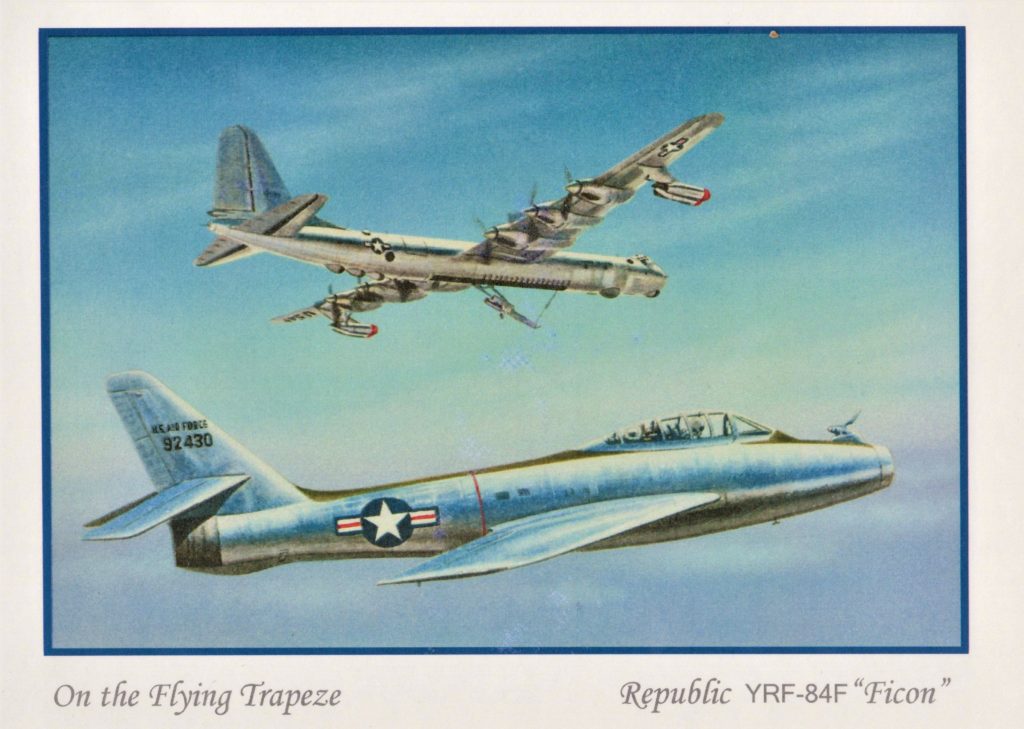
FICON – Fighter Conveyer Art
One of Bud Anderson’s early test assignments was Cold Weather Testing of the F-82 in Alaska

